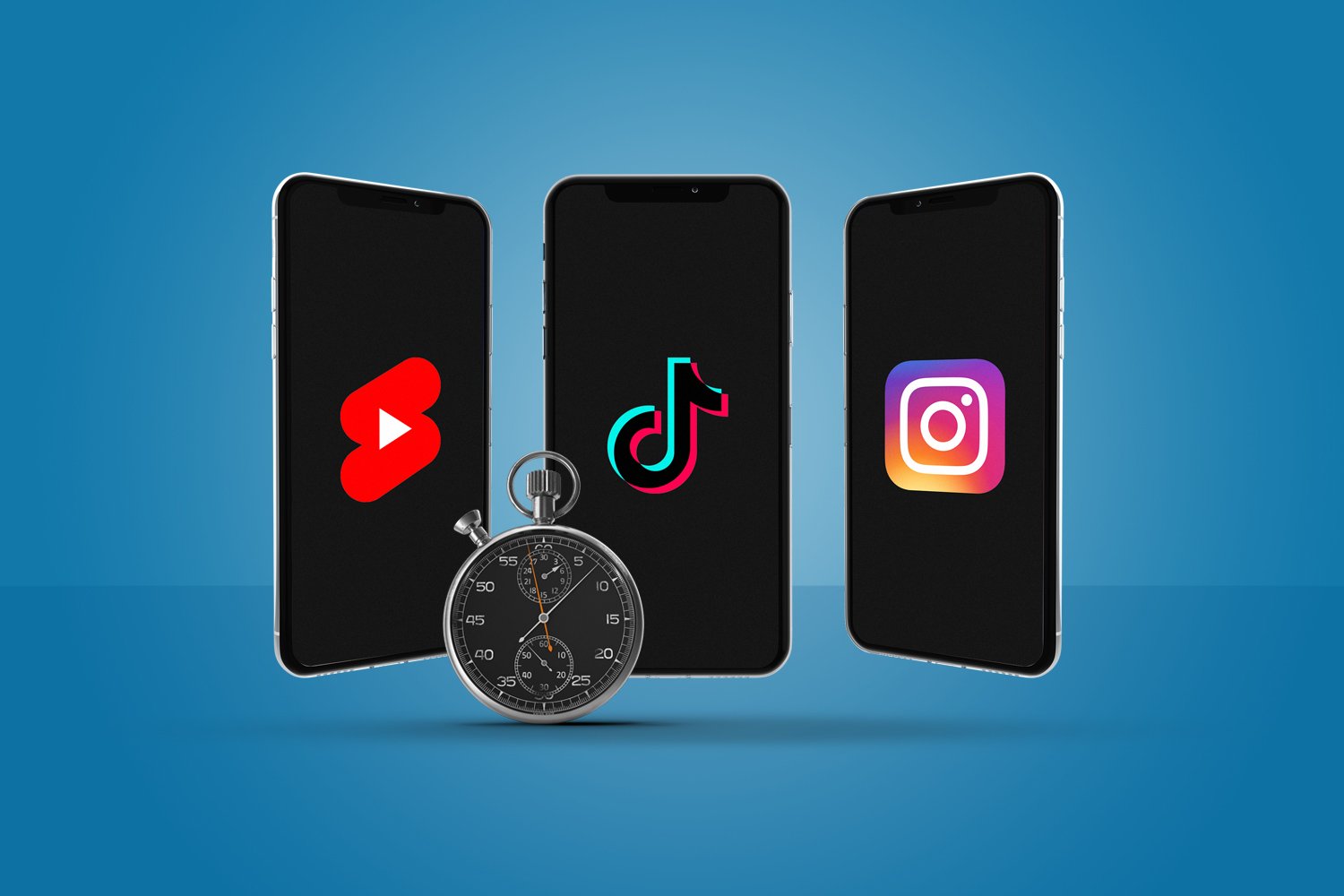Short Form video has become a powerhouse in digital marketing, offering brands a unique way to engage audiences quickly and effectively. Platforms like TikTok, Instagram Reels, and YouTube Shorts allow businesses to capture attention in under a minute, making it easier to convey messages in a fun and memorable way. These videos are ideal for increasing brand awareness, driving traffic, and fostering consumer interaction. Their shareable nature and viral potential make them an essential tool for marketers looking to connect with younger, mobile-first audiences. Incorporating short-form video into your strategy can significantly enhance your online presence and drive results.
What is short form video?
Short form video refers to video content that is typically under 60 seconds in length. It’s designed to capture the audience’s attention quickly and deliver a message in a concise, engaging format. Platforms like TikTok, Instagram Reels, YouTube Shorts, and Snapchat have popularized this type of content due to their ability to provide instant entertainment and information. These videos often feature dynamic visuals, music, trends, and creative storytelling to keep viewers engaged. Short-form videos are ideal for marketing because they can be easily consumed on mobile devices, are shareable, and tend to have high viral potential. With attention spans shrinking, businesses use short-form videos to promote products, share brand messages, or create a connection with their audience. Their effectiveness lies in their ability to deliver impactful content that can entertain, inform, and inspire action—all in just a few seconds.
What platforms use short-form video content?
Several popular platforms use short-form video content, allowing users and brands to create, share, and discover quick, engaging videos. TikTok is the leading platform for short-form videos, where users upload content up to 3 minutes long, though most videos are under 60 seconds. Its algorithm promotes viral content, making it ideal for creative and impactful marketing. Instagram Reels offers similar features, allowing users to share 15 to 90-second videos, often incorporating music, effects, and filters. YouTube Shorts is YouTube’s version of short-form video, allowing creators to upload videos up to 60 seconds long, typically using vertical video format. Snapchat remains popular for short-form content, particularly through Stories and Snap Ads. Facebook also supports short videos through its Stories feature. These platforms cater to audiences with short attention spans and are essential for digital marketers seeking to engage users quickly, boost brand visibility, and create viral content.
Why use short-form video?
Short-form video is an incredibly effective tool in digital marketing due to its ability to capture attention quickly and engage audiences in a fast-paced online environment. With shrinking attention spans, short-form videos provide an ideal format to deliver impactful messages in under a minute. These videos are easily consumable on mobile devices, making them perfect for on-the-go viewing. They are also highly shareable, which increases their potential for viral reach and organic growth. Additionally, short-form videos allow brands to showcase creativity, whether through humor, storytelling, or visual appeal, which helps in building stronger emotional connections with the audience. Platforms like TikTok, Instagram Reels, and YouTube Shorts have become highly popular, making short-form video an essential part of digital marketing strategies to stay relevant and competitive. By using short-form video, brands can boost engagement, drive traffic, and ultimately increase conversions, making it a must-have tool in any marketing plan.
How should you schedule your video content?
Scheduling video content effectively is key to maximizing its impact and engagement. To start, plan your content around your audience’s behavior. Analyze when your target audience is most active on platforms like Instagram, TikTok, or YouTube to ensure your videos are posted at peak times. Consistency is also crucial—develop a content calendar and stick to a regular posting schedule, whether it’s daily, weekly, or bi-weekly, so your audience knows when to expect new content. Additionally, consider the type of video content and tailor your schedule accordingly. For instance, promotional or product videos might be scheduled during peak shopping times, while lighter, entertainment-focused content could go live during evening hours. Using social media management tools like Buffer, Hootsuite, or Later can help automate and optimize your posting times, ensuring that your videos reach the widest possible audience with minimal effort. Regularly review analytics to adjust your schedule based on performance and audience engagement.
How can you use AI in your short-form videos?
AI can significantly enhance short-form video content by streamlining production and optimizing engagement. One way AI can be used is through automated video editing tools, which can help create polished, professional-looking content quickly. AI-powered platforms like Adobe Premiere Pro’s Sensei or Magisto can analyze raw footage, select key highlights, and automatically generate engaging video clips, saving time and effort. AI can also assist with creating personalized content by analyzing viewer preferences and suggesting trends, music, or effects that resonate with your audience. Additionally, AI-driven tools like chatbots or voice assistants can be integrated into videos to boost interactivity. AI can also optimize your video’s reach by providing insights into the best times to post, identifying trending topics, and even predicting viral potential. By leveraging AI in short-form videos, marketers can produce content faster, ensure better targeting, and create more compelling, audience-focused experiences that drive engagement and conversions.



